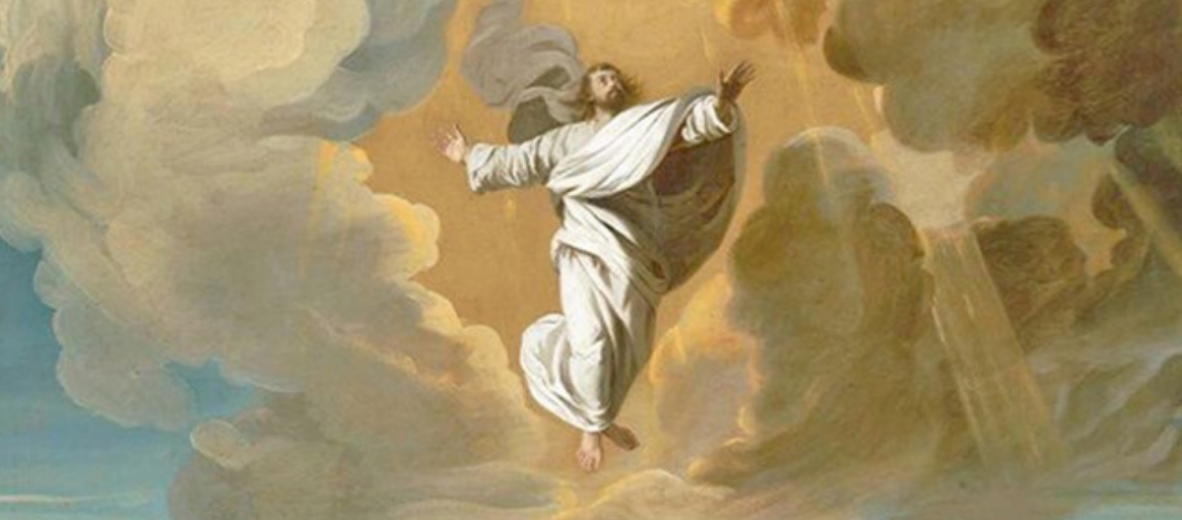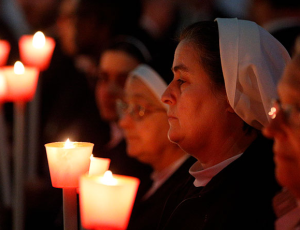Bishop David M. O’Connell, C.M., shares a reflection about the Feast of the Ascension of the Lord:
Although the liturgical celebration of the Solemnity of the Ascension has been transferred to this coming Sunday in the Dioceses of New Jersey this year, I can’t help but reflect about its meaning today, Thursday, 40 days after Easter. This great feast – whenever its placement of the Catholic Church calendar occurs – commemorates our belief that the Risen Lord Jesus, gathered with his disciples on Mt. Tabor near Jerusalem, ascended body and soul into heaven, returning to his Father.
The Acts of the Apostles states: “… as they were looking on, he was lifted up and a cloud took him from their sight (Acts 1:9).”
The Gospel of Mark, the first of the four Gospels, gives this account: “So then the Lord, after he spoke to them, was taken up into heaven and took his seat at the right hand of God. But they went forth and preached everywhere, while the Lord worked with them and confirmed the word through accompanying signs (Mark 16:19-20).”
Other references in the New Testament scriptures point to this experience, although less directly. The Gospel of Matthew describes what is called “the Great Commission,“ when the Resurrected Jesus instructs his Apostles:“The eleven disciples went to Galilee, to the mountain to which Jesus had ordered them. … Then Jesus approached and said to them, ‘All power in heaven and earth has been given to me. Go, therefore, and make disciples of all nations, baptizing them in the name of the Father and of the Son and of the Holy Spirit, teaching them all that I commanded you. And, behold, I am with you always, until the end of the age’ (Matthew 28:16-20).”
In John’s Gospel, after his Resurrection, Jesus makes a curious reference to his Ascension in conversation with Mary Magdalene: “Stop holding on to me, for I have not ascended to my Father (John 20:17).”
That the Risen Lord Jesus “ascended” from the earth to his Heavenly Father is a scripturally based belief and teaching of the Catholic Church following his Resurrection.
Through the centuries, scripture scholars, Fathers of the Church, including St. Augustine (354-430 AD), and other great theologians have frequently commented on its meaning. His Resurrection and Ascension, often referred to as his “Exaltation,” are considered foundational events in Jesus’ life on earth and among the greatest mysteries of our Catholic faith. It is also celebrated in other Christian faith traditions and is depicted frequently in Christian art through the ages.
Although the Catholic Church’s belief in the Ascension of the Lord Jesus was present from its earliest days, its liturgical commemoration as a separate feast only gradually appeared on the Church’s calendar since the fourth century. In the Nicene Creed (325 AD) and subsequent professions of faith, the Church proclaims that the Lord Jesus “ascended into heaven and sits at the right hand of the Father.”
As the Easter season draws to a close, we consider the Solemnity of the Ascension – traditionally called Ascension Thursday – and what it means to the Catholic community of faith.
It represents the end of the incarnate physical, bodily presence of the Risen Lord Jesus here on earth and his return to the Father. It highlights his universal, eternal, spiritual presence among us: “I am with you always, until the end of the age.”
We read in St. Paul’s Letter to the Colossians: “If then you were raised with Christ, seek what is above, where Christ is seated at the right of God. Think of what is above, not of what is on earth. For you have died and your life is hidden with Christ in God. When Christ our life appears, then you too will appear with him in glory (Colossians 3:1-4).” Just as his Resurrection is our introduction to eternal life, so his Ascension is our path to eternal glory. The Ascension prepared the Church for the presence of his Holy Spirit, his promised Advocate, on Pentecost, ten days later.
With that in mind, St. Augustine explained: “For just as he remained with us even after his Ascension, so we too are already in heaven with him … While in heaven he is also with us; and we, while on earth, are with him. He is here with us by his divinity, his power and his love. We cannot be in heaven, as he is on earth, but in him, we can be there by love … Out of compassion for us he descended from heaven, and although he ascended alone, we also ascend, because we are in him by grace (Augustine, “Sermon on the Ascension of the Lord”).”
For us as Catholics and for all Christians, the Solemnity of the Ascension – whether celebrated on Thursday or the following Sunday – offers us hope that Christ will return to us in glory, that his Holy Spirit will remain with us now and always as we proclaim his love and mercy and truth, and that, through our faith, we will be his witnesses “until the end of the age.”
The artwork is “Ascension,” by John Singleton Copley. This beautiful piece hangs in the Museum of Fine Arts in Boston, MA. Bishop O’Connell writes, “This great feast – whenever its placement of the Catholic Church calendar occurs – commemorates our belief that the Risen Lord Jesus, gathered with his disciples on Mt. Tabor near Jerusalem, ascended body and soul into heaven, returning to his Father” in his reflection on the Feast of the Ascension of the Lord.




